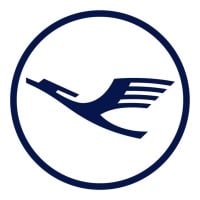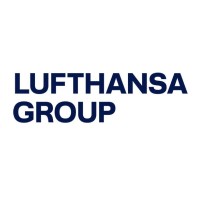Company Cyber Security Posture
NANA
NA Company Details
NA
NA
NA
NA
NA
NA
Scan still pending
NA
NA
Between 200 and 800
This score is AI-generated and less favored by cyber insurers, who prefer the TPRM score.
 NA Global Score
NA Global Score.png)

Company Scoring based on AI Models
| Model Name | Date | Description | Current Score Difference | Score |
|---|---|---|---|---|
| AVERAGE-Industry | 03-12-2025 | This score represents the average cybersecurity rating of companies already scanned within the same industry. It provides a benchmark to compare an individual company's security posture against its industry peers. | N/A | Between 200 and 800 |
Company Cyber Security News & History
| Entity | Type | Severity | Impact | Seen | Url ID | Details | View |
|---|
Company Subsidiaries

NA
Access Data Using Our API

Get company history
.png)
NA Cyber Security News
Could WestJet Cybersecurity Incident Mean More Planes Could Go Down In The Future? Details We Know So Far
WestJet has confirmed it was the target of a cybersecurity breach affecting its internal systems and mobile app, prompting an investigation ...
Indian schools hit by 8000-plus cyberattacks per week: Report
Indian educational and research institutions faced an average of 8,487 cyberattacks per week over the last six months—nearly twice the ...
Airlines, airports increasing spending on cybersecurity
About half of airlines and three-quarters of airports are starting their digital transformation by upgrading IT infrastructure, moving to the ...
10 flights of Indian carriers receive bomb threats in 2 days; Chicago-bound Air India plane diverted to Canada | Latest News India - Hindustan Times
The seven threats via microblogging platform X on Tuesday came a day after three international flights originating from Mumbai received bomb ...
Indian airlines, airports and some brokerages affected by global IT outage
Several Indian airlines and airports and traders at some brokerages said they faced technical and operational disruptions on Friday amid a ...
BD Soft Unveils 2025 Expansion Strategy; Reports Triple-Digit Growth in Channel Network and Strategic Alliances
In the first six months of 2025, BD Soft witnessed a 37% surge in its channel partner network and a 41% increase in its active client base, ...
Adani Airport Holdings Limited and Thales Forge Strategic Partnership to Improve Airport Operations and Passenger Experience in India
Thales, a global leader in advanced technologies, today announced a strategic partnership to revolutionise AAHL's international airport operations and ...
Air India’s digital transformation takes flight with Microsoft Azure
The transition to Microsoft Azure has greatly improved performance & customer experience through advanced analytics and AI platforms. Air India ...
CIAL leads with in-house Cyber Security Hub
C-DAC brings its cybersecurity expertise to help orchestrate and manage the CDOC, adding an extra layer of resilience to CIAL's cyber defenses.

NA Similar Companies

GOL Linhas Aéreas
Somos a maior Companhia Aérea do País e estamos entre as que mais crescem no mundo. A nossa história começou em 2001 e, desde então, somos responsáveis por inovar o mercado da aviação no Brasil. Tudo isso graças à dedicação do nosso Time para garantir o nosso Valor número 1, a Segurança, entregand

Malaysia Airports
Our Vision A Global Airport Group That Champions Connectivity and Sustainability Our Brand Promise Hosting Joyful Connections About Malaysia Airports Malaysia Airports manages and operates 39 airports in Malaysia and one international airport in Istanbul, Turkey. The 39 airports in Malays

Lufthansa
Lufthansa is one of the world's largest and most prestigious airlines. With hubs in Frankfurt and Munich, we currently fly to 211 destinations in 74 countries. As an industry innovator, we have long been committed to environmental care and sustainability, operating one of the most technologically-

Lufthansa Group
The Lufthansa Group is an aviation company with operations worldwide. It plays a leading role in its European home market. With 109,509 employees, the Lufthansa Group generated revenue of EUR 32.770m in the financial year 2022. The Passenger Airlines segment includes, on the one hand, the network a

Thai Airways International
Thai Airways International Public Company Limited (THAI) is a public company registered in The Securities Exchange of Thailand since 1991 with the Ministry of Finance as a dominant shareholder of 47.86 percent. THAI operates the airlines business as a full service carrier, which provides the transp

Aerolineas Argentinas
Aerolíneas Argentinas es la compañía líder en el mercado aerocomercial argentino y referente en la región desde 1950. Su flota de 84 aviones alcanza 38 destinos en Argentina y otros 22 a nivel regional e internacional. Con la reciente incorporación de 2 aeronaves de cargas, la compañía expan

Frequently Asked Questions
Explore insights on cybersecurity incidents, risk posture, and Rankiteo's assessments.
NA CyberSecurity History Information
How many cyber incidents has NA faced?
Total Incidents: According to Rankiteo, NA has faced 0 incidents in the past.
What types of cybersecurity incidents have occurred at NA?
Incident Types: The types of cybersecurity incidents that have occurred include .
Additional Questions
What Do We Measure?
















Every week, Rankiteo analyzes billions of signals to give organizations a sharper, faster view of emerging risks. With deeper, more actionable intelligence at their fingertips, security teams can outpace threat actors, respond instantly to Zero-Day attacks, and dramatically shrink their risk exposure window.
These are some of the factors we use to calculate the overall score:
Identify exposed access points, detect misconfigured SSL certificates, and uncover vulnerabilities across the network infrastructure.
Gain visibility into the software components used within an organization to detect vulnerabilities, manage risk, and ensure supply chain security.
Monitor and manage all IT assets and their configurations to ensure accurate, real-time visibility across the company's technology environment.
Leverage real-time insights on active threats, malware campaigns, and emerging vulnerabilities to proactively defend against evolving cyberattacks.




